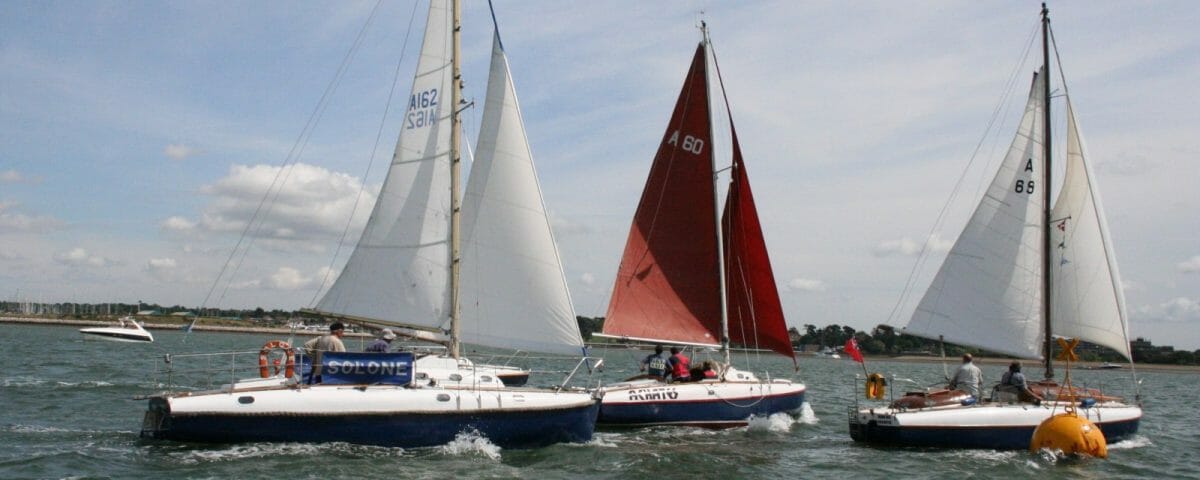The standard rig illustrated in Fig. 2 was the so-called three quarter rig when the forestay holding the luff of the foresail was secured approximately threequarters of the way up the mast. This rig, and the sail area, was based on experience gained with the prototype and met the design criterion that the boat should be able to go to sea in all weathers. She had to be light enough to tow, but with adequate weight in the keels to ensure self-righting and safety at sea. The sail area of the standard boat with main and genoa met that requirement.
Some owners, and especially those who sailed in light weather conditions, felt the need for more sail. Alan Vines therefore experimented with a masthead rig fitted to the standard boat and mast with only small modifications, and sailed the boat extensively in all conditions. To windward in strong winds he found that performance was not improved as the longer forestay was more difficult to keep taught. In light winds, however the masthead genoa improved the performance considerably both to windward and on a reach. The masthead spinnaker was a marked improvement on a run or a reach because the increase in sail area amounted to about 60 sq ft. He carried a masthead spinnaker in winds up to 20mph (Force 4) and tried the effect of broaching in these conditions. The boat heeled to about 45 degrees, but bore away and came up quickly as the spinnaker sheet was eased.
In the 1958 Round the Island Race, with winds from calm to strong squalls, Alan Vines sailed the Fairey Marine demonstration Atalanta A77 with a masthead rig and finished 44 minutes ahead of the next Atalanta (A61 Ellissa) in a total time of just over 10 hours. Moreover, he overhauled many of the main part of the fleet who started 15 minutes before the Atalantas.
The mast designed for the 3/4 rig proved to be too light for the masthead rig and a rather more robust mast was designed, drawings for which were made available to owners.

